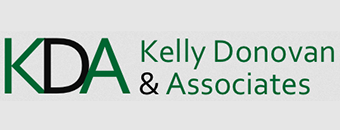LinkedIn redesign: the #1 mistake I see people making
LinkedIn’s major overhaul of the site took place in 2017, yet many users seem oblivious to the impact this is having on their profiles.
One of the biggest changes was minimizing the amount of text that displays for each of your jobs as well as the About section (formerly known as the Summary section).
- Only the first three lines of the summary section display
- Only the first eight lines of your current job display
- Only the first four lines of each previous job display
After the lines that display, there’s a link that says “see more” that people can click if they want to read the rest.
The problem: why should I, the reader, bother to make the effort to click “see more” if those first three, four, or eight lines weren’t sufficiently interesting?

Don’t let a company description hog your most valuable real estate
A common resume tactic is to include a short description of each company you’ve worked for. I do this on most resumes I write, and it’s especially important if you’ve worked for companies that aren’t well known–or if you’re changing industries and the readers might not be as familiar with your past employers.
On a resume, the description of a company is often two lines long–sometimes even three if a lot of explanation is needed (mentioning a merger, for example). This works fine; I usually use italic font that is .5 pt smaller than the rest of the body font. This helps to convey that the information in question is distinct from the other text and being provided for context only.
However, starting a job with a company description will NOT be a good approach on LinkedIn. If it’s a past job where only four lines will display before the “see more” link, that would mean that the first few lines are describing your employer and then there might only be a single line visible describing your work and accomplishments there!
That’s not very much room to “sell” your value. We need to get someone interested in clicking “see more” to read the rest, and company descriptions aren’t terribly exciting. They’re included on the resume to provide context, but ultimately the profile is supposed to be about YOU.
You can still weave in a very brief description of the company (eg., “Fortune 1000 manufacturer”) into those first few lines. Rather than this being the very first thing, you can gracefully incorporate it into the first sentence describing your work at the company.
Bear in mind that on LinkedIn, the company name and logo are clickable links to the company page (if the company has one and if you typed it in correctly so that the logo displays on your profile). The company page has information about the company, including its size, industry, and other details a recruiter or decision maker would appreciate.
Only a few visible lines at the start of the “About” section
The About section is the first thing a reader sees on your profile after the headline, head shot, and header graphic at the top. Now that only the first few lines display, it’s important to think about what the most critical things are for readers to know in case they don’t click “see more.” What would you want to be someone’s biggest takeaway? The top three takeaways?
You can also think about how to draw your reader in. Some advocate a creative storytelling approach to intrigue people. The potential downside is that if someone doesn’t read the rest, they might not grasp those key things you’d like them to know. Of course, it’s best to address those key things in the Experience section, too…but reinforcement is how you get people to remember something!
I like to strike a balance: get some key things in there that reinforce the messages and points we want to make, and do it in a way that’s informal, first-person, and conversational. That way it immediately shows that reader that you did NOT just copy and paste a boring resume summary filled with cliches. Unlike so many of the profiles on LinkedIn, you’re actually talking like a normal human being!
That being said, no two executives are the same, and out of every 30 or so LinkedIn profiles I write, I might do something a little different, like a very creative About section. It depends on the client’s career story and goals.
This article first appeared on KellyDonovan.com



